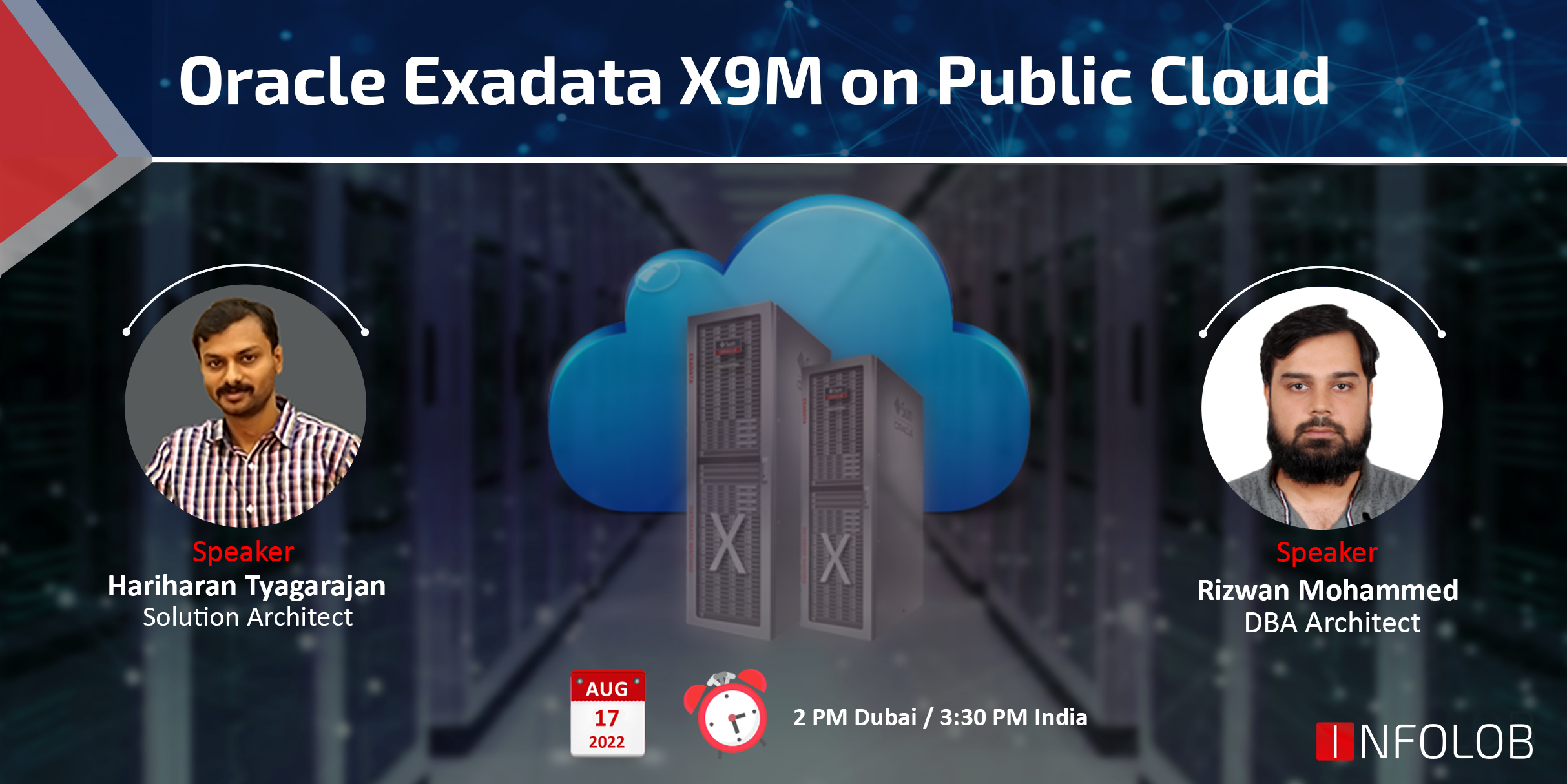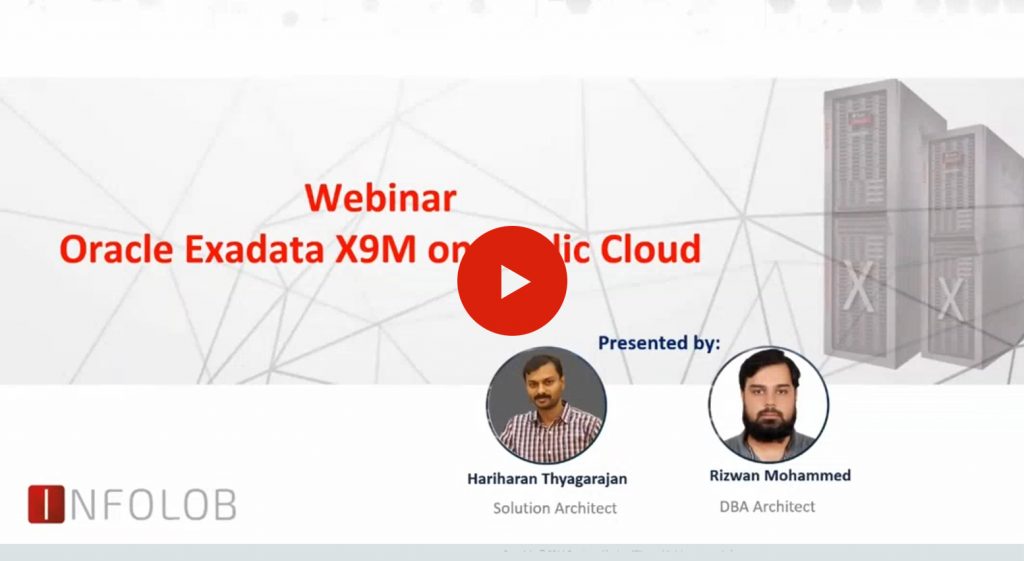Back in 2008, Oracle Exadata’s first-ever release linked to Oracle’s vision of delivering market-leading performance and availability at the lowest cost, deployable everywhere. And since 2009, Infolob is dedicated to delivering end-to-end Exadata solutions and services to enterprises of all kinds.
Today, with the current list of use cases transcending petabyte warehouses, super-critical OLTP (financial trading, manufacturing, e-commerce, etc.), complex applications (SAP, Fusion Apps, EBS, NetSuite, Siebel, PeopleSoft, etc.), and consolidation of hundreds of databases for 88 out of the Fortune Global 100 – Oracle Exadata X9M (the latest face of Exadata) is already living that vision.
Plus, Oracle Exadata is literally deployable everywhere, i.e., in the traditional on-premises style; as a fully-managed public cloud service called Exadata Cloud Service; and as Exadata Cloud@Customer viz. a fully-managed private/hybrid Exadata cloud physically delivered to your data center.
What truly contributes to Oracle Exadata’s worldwide adoption is the ideal hardware, unique algorithms, cloud-scale automation, optimization, and portability.
To fully acquaint aspiring businesses with Exadata’s brilliance – Infolob’s Solution Architect, Hariharan Thayagarajan, and Database Architect Rizwan Mohammed – conducted an insightful webinar featuring the ‘ins’ and ‘outs’ of Oracle Exadata X9M in Oracle Cloud on August 17, 2022. It included:
OLTP with Exadata
→ Fastest OLTP – scale-out storage, RDMA, persistent memory, and fastest NVMe flash
→ Fastest scale-out with unique RDMA algorithms for inter-note cluster coordination
→ Fastest recovery from failed/sick component
→ Exceptional OLTP architecture with the hottest data automatically cached in PMEM (1.5 TB of PMEM per storage server)
Analytics with Exadata
→ Smart Scan that automatically offloads data-intensive SQL operations to storage
→ Smart Flash Cache and Storage Index that automatically catalyze database I/O
→ Columnarization that automatedly converts data to fast in-memory columnar format
Consolidation with Exadata
→ Prioritization of latency-sensitive or business-critical workloads through full stack
→ Workload isolation of multiple tenants/workloads through full stack
Fully Elastic Expansion
→ A minimum size HA configuration consists of 2 Database Servers, 3 Storage Servers, Plus no malicious neighbors
→ Users get 4032 DB CPU cores, 44 TB DRAM 96 TB Persistent Memory, 1.6 PB of NVMe Flash






